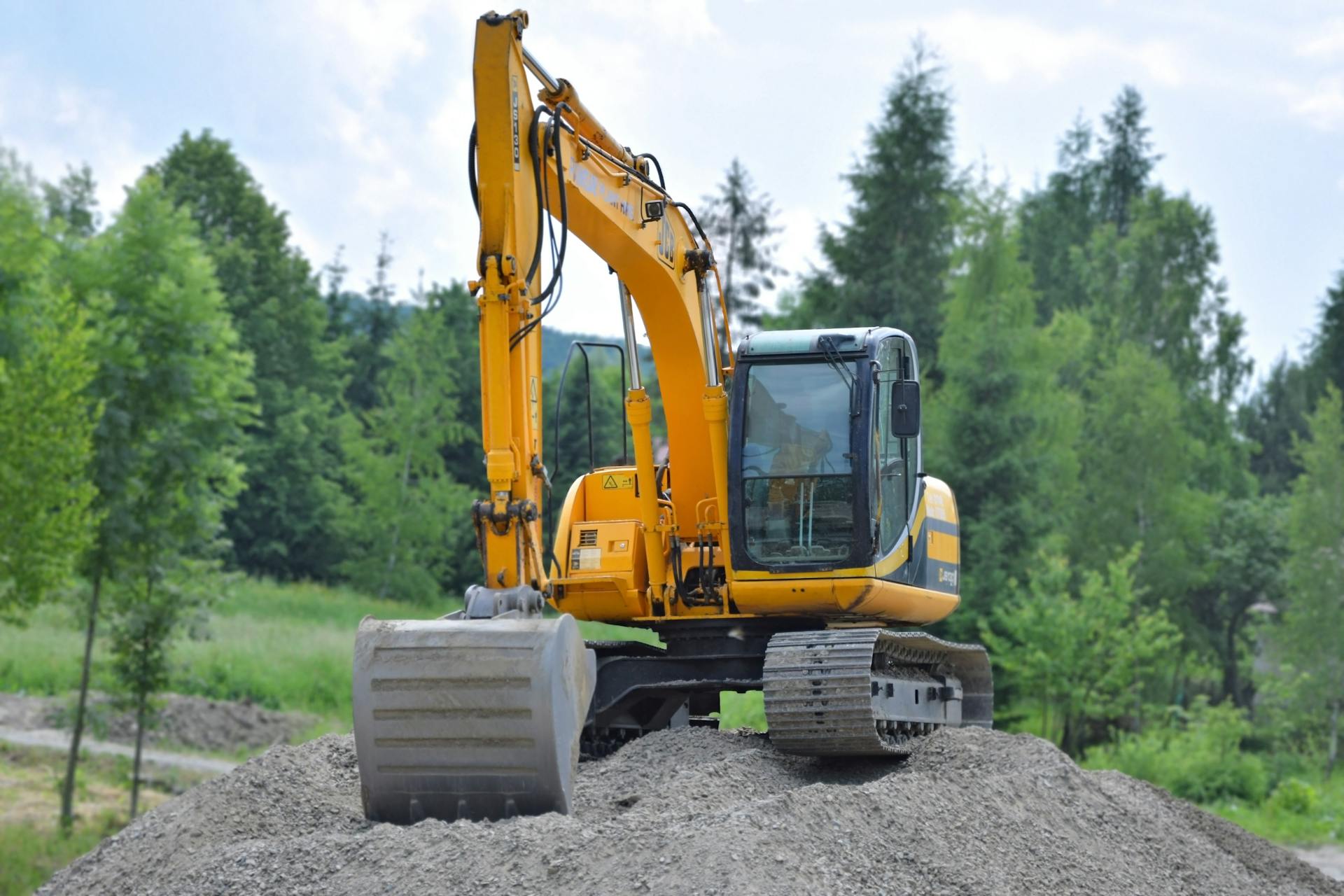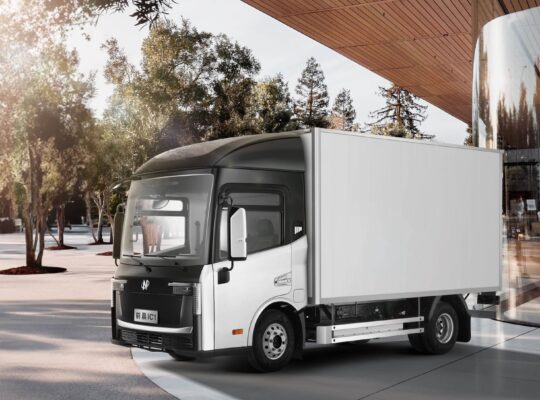From diesel to daisies: 5 recent innovations in eco-friendly heavy equipment.
Heavy vehicles such as tow trucks, tractor-trailer rigs, step vans, school buses, Class A motorhomes and construction machines are heavy polluters.
They run on fossil fuels, releasing untold amounts of greenhouse gasses into the atmosphere. As dirty as these vehicles are, they’re indispensable.
Moving forward, will the latest innovations finally make heavy equipment sustainable?
What Problems Exist?
Decarbonizing fleet vehicles is notoriously challenging. Organizations whose business relies on them can’t think like ordinary people.
Suppose you want to drive a zero-emission car to save on gas and reduce their carbon footprints. You only have to pay about an extra grand to finance an electric vehicle instead of one equipped with an internal combustion engine. Individuals may think it’s a small sacrifice to keep the planet suitable for human habitation for future generations.
On the other hand, fleet owners — commercial freight carriers, construction firms, equipment lessors, school bus contractors, bus operators, RV rental companies, oil and gas titans, and food and beverage giants — don’t enjoy the same luxury. Companies need significant capital to upgrade to greener vehicles. If their cost-benefit analyses yield unenticing findings, they’ll be more financially motivated to remain environmentally unsound to stay competitive.
5 Latest Green Heavy Machinery Innovations
Heavy equipment has long been ripe for innovation. This recent slew of five technological breakthroughs may decidedly push these metal workhorses toward sustainability.
- Hybrid and Electric Earthmovers
Construction equipment manufacturers worldwide have been making inroads into electrifying earthmoving machinery. This development promises to make construction sites emission-free and quiet.
Swedish company Huddig unveiled the diesel-electric hybrid backhoe loader Tigon. While it’s not emission-free, it can run on renewable diesel — a drop-in replacement to petroleum diesel — to help reduce fossil fuel demand. Regarding power, Huddig claims that it’s 30% more powerful than its diesel version. Fellow Swede Volvo CE rolled out three hydraulic hybrid excavators designed to operate 17% more efficiently than traditional machines and can power themselves using the energy their booms’ downward motions produce.
Japanese manufacturer Kubota released an electric tracked dumper outfitted with a 48-volt lithium-battery engine. It can reach 80% charge in 1.5 hours and has a load capacity of 700 kilograms — about 1,500 pounds.
Bobcat began producing its one-ton electric mini excavators. Optimized for basement excavation and indoor demolition in quiet zones, they have maintenance-free lithium-ion battery packs that take less than two hours to recharge up to 80% and operate for four hours per charge or with a 400-volt supercharger.
JCB boasts an electric telescopic handler capable of lifting up to 2.5 tons of load and rivaling its diesel counterpart’s performance. In addition, the British construction machinery producer expands its zero-emission equipment selection with its electric site dumper — a one-ton and high-tip kind. Two five-kilowatt-hour lithium-ion batteries with fast charging capability power it.
Chinese original equipment manufacturer LiuGong introduced its remote-controlled wheeled loader. This high-efficiency and low-noise machine can run for eight hours with its lithium iron phosphate battery. Such high energy density allows its cell to last 4,000 charging and discharging sessions. This cutting-edge heavy equipment is 5G-capable, has an Internet-of-Things-based construction management platform and comes with an intelligent shovel loader.
- Aerodynamics
Aerodynamic truck improvements minimize drag — the air resistance a vehicle must overcome to move forward at the desired speed. These aids increase mileage and reduce climate change emissions.
Add-ons such as vortex generators, side skirts, roof and chassis fairings, boat tails, and aero bumpers have improved the fuel efficiency of diesel heavy-duty trucks. More brand-new models feature aerodynamic cabins. Their minimal protrusions, sleek surfaces and curved edges render them less prone to drag.
Aerodynamic-enhancing extras and vehicle characteristics can help freight carriers — especially those in the United States — navigate stricter regulatory environments starting in 2024. For instance, the U.S. Environmental Protection Agency is working with manufacturers to establish more stringent greenhouse gas emissions standards for new machinery. Once finalized and implemented, the new guidelines will pressure fleet managers to move toward sustainability faster than they have.
Adapting to stricter decarbonization directives is challenging but presents fantastic opportunities. Pursuing drag-reducing strategies and other operational efficiencies more seriously should cut trucking companies’ costs in the long run.
- Adapting Routing
Adaptive vehicle routing uses algorithms to determine the fastest routes at a given time based on available data and dynamically deviate from the initial course as variables change. It’s the opposite of rigid static routing, which uses planned journeys based on fixed routes with little to no deviations, regardless of what happens on the road.
These routing schemes help drivers circumvent bottlenecks and roadblocks. Being efficiently reactive to setbacks is the key to achieving target arrival times with less fuel.
- Shared Truckload
This concept makes every land-based freight’s carbon emission count, which is green in itself. It involves consolidating shipments from seaports en route to similar inland destinations into a single truck, eliminating unnecessary stops and shortening transit durations.
Various startups have developed platforms connecting shippers and truck fleet owners. These tech companies use proprietary algorithms to determine which vehicle could haul which cargo based on load, calculate prices and provide real-time shipment visibility when the truck hits the road.
Everybody wins in this innovative solution to inefficient logistics processes. Shippers can absorb less risk of cargo damage and reduce costs, freight carriers can profit from idle resources and the planet can see fewer climate change emissions.
- On-Demand Trucking
On-demand trucking apps make booking freight vehicles as convenient as hailing rides via Uber. They aggregate available trucks in various locations, facilitate communications between shippers, drivers and carriers, and handle backend processes to simplify truck search, price negotiation, issuance of transport documents like bills of lading, and payment.
These platforms leverage route optimization technology, AI and machine learning to find the path of least resistance and move more cargo in less time. This business model is a game-changing green solution in areas where trucks return to the depot without a backload. Deadheading — driving a truck carrying a cargo-less trailer — on average results in 15.4% of empty mileage among non-tanker carriers.
Spending more than 15% of the time burning fossil fuel for nothing is a significant source of meaningless greenhouse gas emissions. Listing vehicles on on-demand trucking apps to pick up a backhaul means more revenue and less unnecessary fuel consumption.
Going Heavy on Innovation to Be Green
Although heavy equipment manufacturers and fleet owners still have a long way to go before they can call themselves eco-friendly, they’re on the right track. They can finally be on the road to sustainability with these latest technological advancements.










